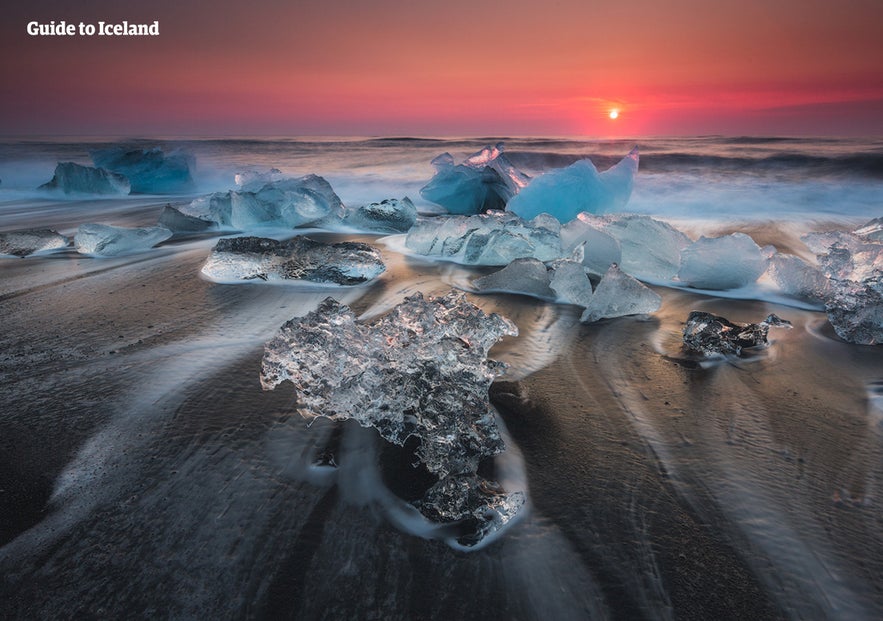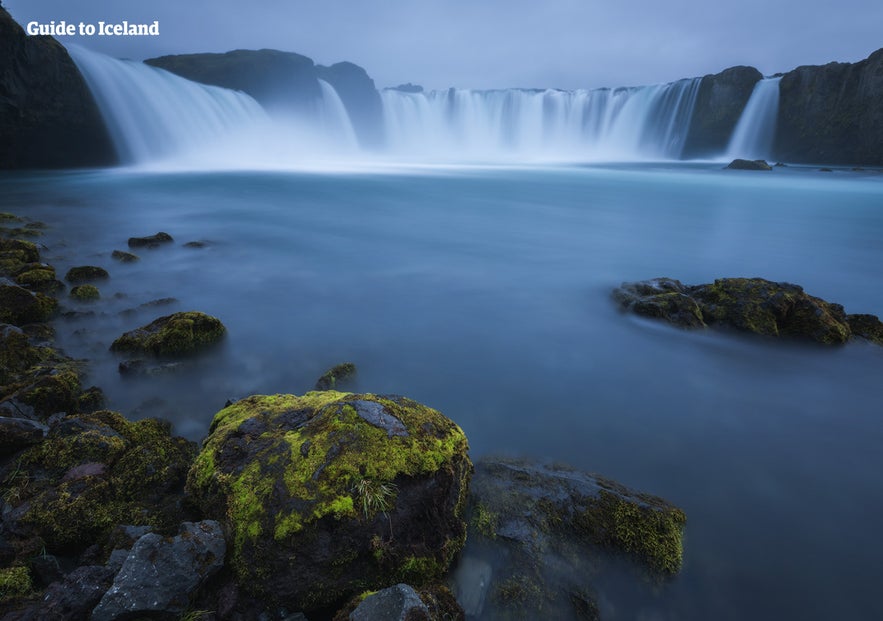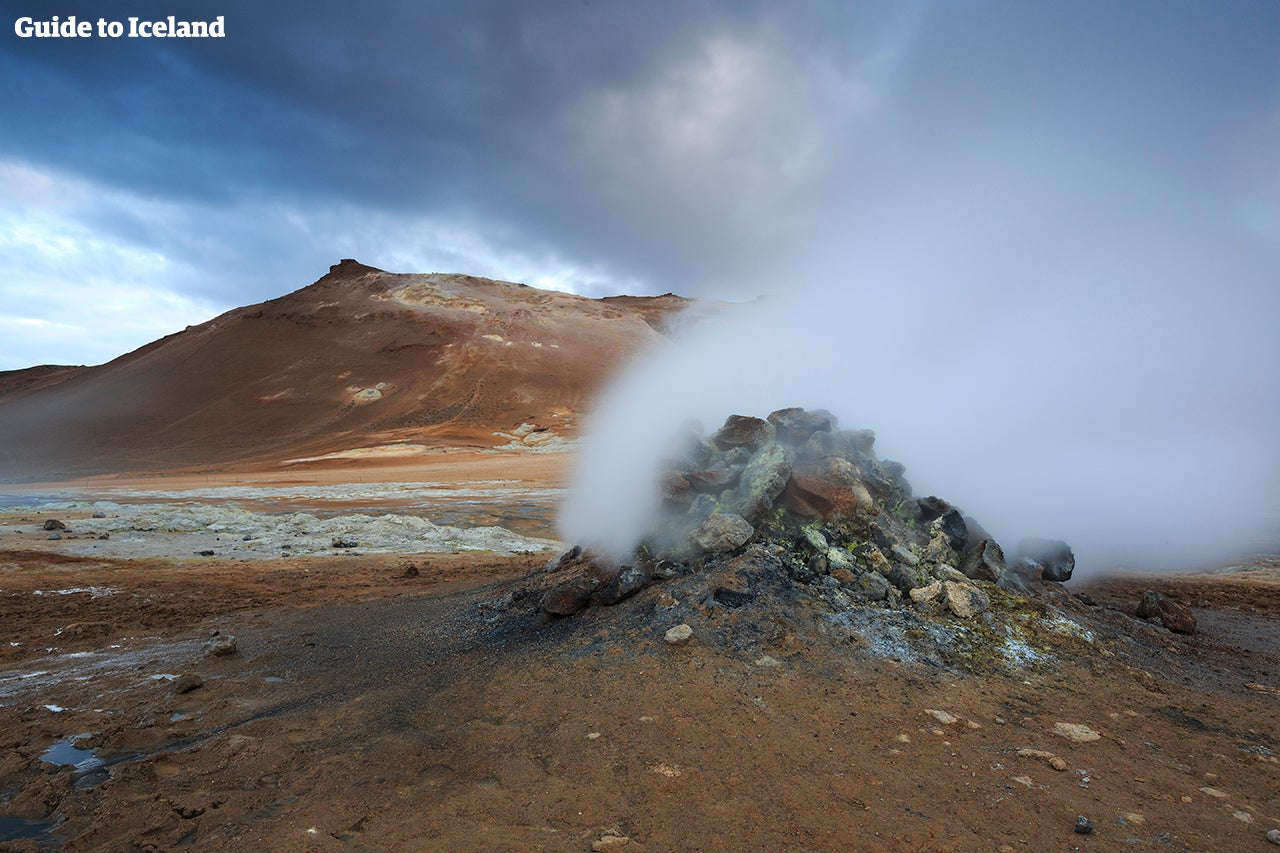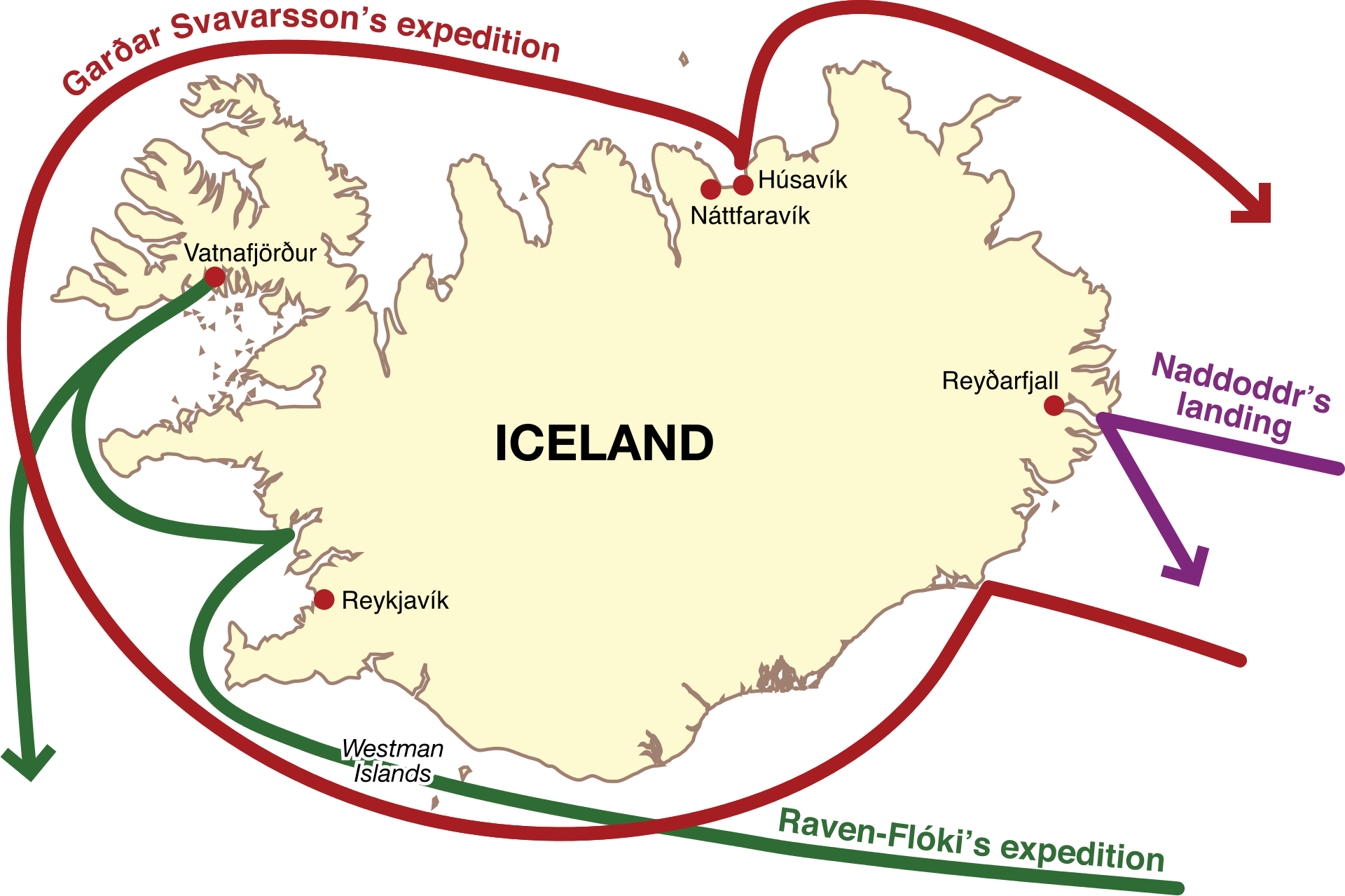What role does water play in Icelandic culture and society? What is the secret behind the international reputation of Icelandic water? Can visitors drink from the tap in Iceland? How do Icelanders utilise water for energy? Read on to find out everything you didn’t know about Icelandic water.
- Read more about Iceland's landscapes in Nature in Iceland
- Learn more information in Iceland's Troubled Environment & Sustainable Tourism in Iceland
Water, in one form or another, covers a staggering 2,750 km² of Iceland's landmass. Glaciers blanket more than a tenth of the entire island, river systems snake through all regions, and there are over 10,000 waterfalls found in the country, including Europe’s most powerful cascade, Dettifoss.
Why You Can Trust Our Content
Guide to Iceland is the most trusted travel platform in Iceland, helping millions of visitors each year. All our content is written and reviewed by local experts who are deeply familiar with Iceland. You can count on us for accurate, up-to-date, and trustworthy travel advice.
And on all sides, Iceland is surrounded by the Atlantic Ocean, where storms and winds cluster and build, battering this lonely island with sheets of rain, sleet and snow.
It should, therefore, come as little surprise that water is a fundamental aspect of the Icelandic psyche, carving both their country's landscape and the character of the people who live here.
In Iceland, water is cherished and protected as a sacred medicine—the holy source that gives and sustains all life—and respected as a force of nature that can take your life away at any given moment if you are not careful.
Unlike the locals, many visitors to Iceland are quite unaware of the power and influence Icelandic water possesses. Buying unnecessary commodities such as plastic-bottled water, and stepping too close to the dangerous waves at Reynisfjara beach—all of these are common occurrences that are born out of a lack of knowledge and respect for this force of nature.
With that in mind, let us unravel some of the biggest secrets of water in Iceland.
6. Iceland is Defined by Water
Icelanders have lived alongside the overbearing power of water since the land was first settled. Throughout the centuries, the country survived on the courage of its fishermen, who braved storms and fierce Atlantic waves daily to ensure they and their loved ones were fed.
Life on the mainland was a reality saturated with long bouts of rain and snow storms—and given Iceland's ferocious weather patterns, tending to the farmstead, the livestock and the home were all a matter of survival.
Naturally isolated and surrounded on all sides by the majestic, lapping waves of the Atlantic, the foreboding landmass that is Iceland has a geological history entirely sculpted by its placement on the Mid-Atlantic Ridge, thousands of meters below the water’s surface. Originating from the “Iceland Plume”—an upwelling of hot, volcanic rock—Iceland first arose above the surface between 16 to 18 million years ago.
And its relationship with the elements has been turbulent ever since. In Iceland's exposed southern corners, precipitation can measure up to 80 inches a year, whilst rainfall in Reykjavik measures at an average of 32 inches a year.
In short, Iceland sees a lot of rain!
- See Also: Rivers in Iceland and Lakes in Iceland
With that in mind, know that Icelanders certainly make a positive out of their notoriously variable climate, utilizing opportunities that best suit the nature of their surroundings. After all, who's going to let a little weather get in the way of a good time?
The sheer variety of water-based activities available in Iceland almost defies imagination, especially considering the rather chilly air and water temperature. And yet, visitors here cannot only partake in scuba diving and snorkeling tours in Silfra Fissure—considered one of the top ten underwater sites internationally—but also glacier hiking, whale watching, boat tours, ice-caving, ice-climbing and so much more.
5. Norse Mythology is Filled with Water Gods
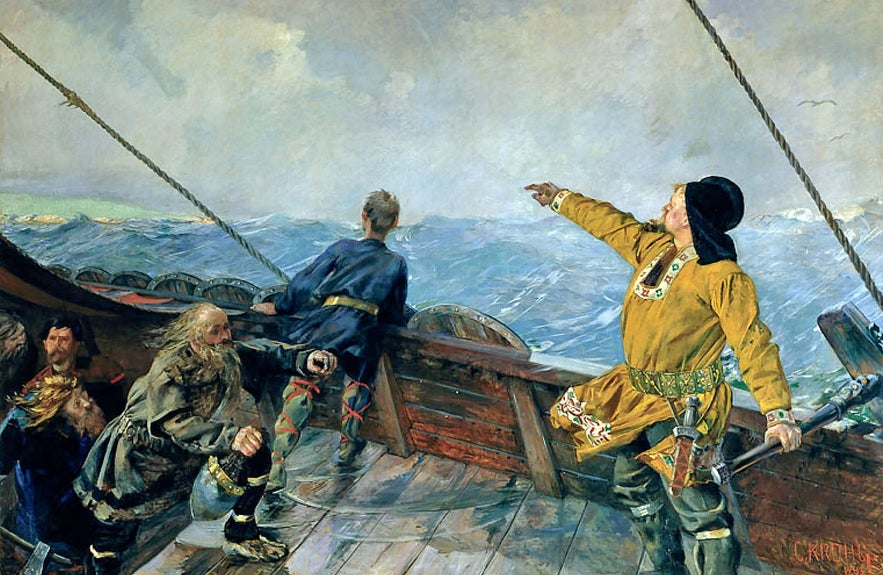
Given Scandinavia’s proximity to the Atlantic Ocean, it should come as no surprise that Norse Mythology is positively brimming with water deities. Vikings, fishermen and other early seafarers were all too aware of the ocean’s ruthless power, delicate beauty and unpredictable nature; in many ways, nothing has changed, as we still consider it a source of food and livelihood, a means of exploration and an indiscriminate executioner.
- See Also: Elves, Vikings and Norse Gods in Iceland.
The early followers of Norse mythology believed their plane of existence to be Midgard (“Middle Earth”), one of the “nine homeworlds” and the only one visible to man. Midgard was said to be surrounded by an impassable ocean, thus immediately aligning it with divinity and ambiguity in Old Norse culture.
Though modern science has done wonders toward discovering the ocean’s many secrets, the omnipresent mystery that underlies it is still as real to us as it was to ancient people. In an attempt to personify this otherworldly source of power, medieval scholars (primarily Icelanders) described all manner of fantastical characters and creatures whose qualities matched that of the tempestuous blue, and fit into the pantheon of the Norse belief system.
- See Also: Folklore in Iceland

One of the most important water deities in Norse mythology, Ægir, is first mentioned in the Prose Edda, a medieval saga written by medieval Icelandic poet, Snorri Sturluson. Ægir is considered to be a Jötunn (a contrast to being a God) and is described as a giant with white hair and a long beard. Widely considered Lord of the Ocean, Ægir is married to the sea Goddess, Rán, with whom they had nine children, the Daughters of Ægir.
The Nine Daughters of Ægir are spirits of the ocean’s waves, each taking a poetic name drawn from the nature of water. These deities were known as Himinglæva (transparent wave), Dúfa (pitching wave), Blóðughadda (red wave), Hefring (rising wave), Uðr (frothing wave), Hrönn (billowing wave), Dröfn (foaming wave) and Kólga (cool wave).
- See Also: Icelandic Literature for Beginners
Ægir and Rán were known to be friends of the Gods, holding elaborate parties that were famous throughout the “nine homeworlds”. Back on Midgard, however, the celestial couple marked danger and death. Vicious storms, capsized ships, the spread of disease, temporary insanity to early sailors: all responsibility for such phenomena fell at the feet of Ægir and Rán.

To appease them, the Vikings would often sacrifice their prisoners in return for safe passage. Still, they knew the Gods to be unforgiving regardless. Rán is described in the sagas as owning a large fishing net in which she captures anyone foolish enough to venture out onto the ocean who has displeased her.
- See Also: Witchcraft and Sorcery in Iceland.
Other Norse deities associated with the sea include the God, Njörður, personifying seafaring, fishing, wind and wealth. His son, Freyr, is one of the most important Gods in the canon and was known to represent rain, sunshine and fertility, while Njörðr’s daughter, Freyja, personified sex, love and death.
Also prevalent throughout Scandinavian folklore are the Nix (aka. Necks or Nokken), a type of water sprites known for their ability to shapeshift into other creatures. Similar to a mermaid, spotting a Nix was considered an ill-omen; a Nix was widely thought capable of luring a man into drowning.
4. You Can Drink the Tap Water
Did you know that you can drink the tap water in Iceland? You should do... it is, after all, found in almost every article on the internet about traveling in Iceland. And yet, time and again, it is typically obvious that some people are still unaware, or perhaps even afraid, of what's coming out of the tap here.
- See also: 9 Worst Tourist Traps in Iceland
The persistent purchasing of plastic bottles of water by tourists is one of the greater aggravations among locals here because of the fragility of their country's environment.
Iceland's water is so clean that drinking from the taps alone doesn't even cover it; more often than not, it is completely safe to drink from the country's streams and river systems, most of which originate from one of the island's many, mighty glaciers. One can even go snorkeling in Silfra fissure and choose to lap up the very fluid in which you swim.
So, allow us to reiterate; the tap water in Iceland is clean, drinkable, delicious, and made up of the exact same components as what is sloshing around in that expensive, environmentally-reckless, "designer" bottle.
- See Also: Iceland's Troubled Environment.
The only thing you need to do is to make sure the cold water runs for a while, because if it's got any hot water mixed in with it then it will smell, and taste, of sulphur. It is only the hot water that smells of sulphur, which you may notice when you take a shower, but not the cold water. And after a while you won't notice the smell anymore.
Companies that focus on providing quality bottled waters are consciously promoting an ideology they know has no grounding in reality. The two major companies (Icelandic Glacial and Iceland Natural Spring Water) are guilty of this, though there would no drawing such an admission out of them.
Consider the founder of Icelandic Glacial and "Richard Branson of Iceland", Jón Ólafsson, and statements he made regarding why his product outshone the competitors (including good ol' tap water):
"The pH level of the water is very unique. It's 8.4, which means it's alkaline water. We drink a lot of things—coffee, alcohol—that are acidic and have a low pH level. Your body is always working to maintain a 7.23 level, and alkaline water will help that balance. It's very healthy for you. Also, we were the first bottled water to be certified carbon neutral."
Such persuasion is spurious at best, backed up by dodgy science and marketing wizardry. With the product appearing in such shows as "Dexter" and "The Big Bang Theory", consumers tend to overlook the thin veneer of promised revitalization, instead justifying their interest by citing the companies' "carbon neutrality", as awarded by the UK-based CarbonNeutral company.
And yet, with an enormous drive to export large quantities of bottled Icelandic Glacial, the company continues to pose a growing threat to an environmentally-sustainable future.
Another example of how difficult this situation is, both economically and environmentally, is a case which featured last year in Iceland Magazine. An Icelandic man in Thailand went to a nearby McDonald's and spotted the fast-food joint selling bottles of Iceland Natural Spring Water for half the price that he could purchase it in Iceland itself.
With such enormous undercutting, the problems and the threats posed will only continue to worsen—that is, of course, unless we as a human race begin to shy away from convenience and instead turn to look out toward a brighter and more naturally-balanced future.
- See Also: Sustainable Tourism in Iceland
4a- A Quick Note on the Water's Eggy Smell
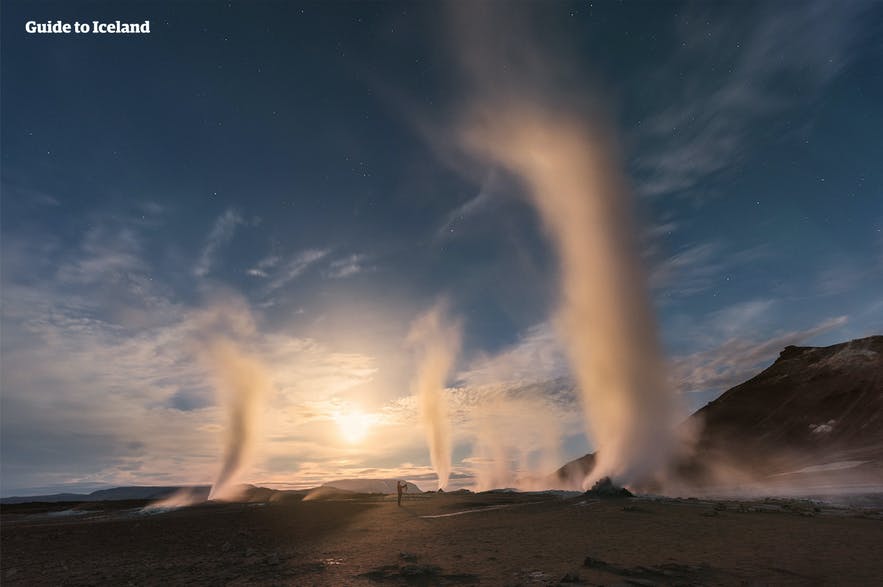
Quickly, let's cover the question many have clicked on this article to get answered; “Why does Iceland’s water smell of eggs?”
Most people assume it is a product of the water’s geothermal origins, similar to that of New Zealand’s town, Rotorua, or Tacoma in Washington state. However, the story is not quite so cut and dry.
According to the Bergur Sigfússon, a member of the research team for Reykjavik Energy, the smell is actually caused because of artificial additives. The cause of the distinctive scent, hydrogen sulphide, is added to the water to make sure that all oxygen is removed from it. This is an essential measure to stop the towns’ and city’s pipes and radiators from corroding.
When drinking water from the tap, we recommend letting it run for ten seconds or so so that the pipes become free of hot water, thus losing that eggy aroma. When it comes to showers, however, there's not a lot you can do except for do your best to ignore it. Trust us; the locals barely even notice it anymore!
If you inadvertently have a swig of this warm, foul-tasting water, worry not; it's completely harmless.
3. You Can Bathe in Natural Hot Pools
 Photo from Hot Spring Hike of Reykjadalur Valley
Photo from Hot Spring Hike of Reykjadalur Valley
One of Iceland’s greatest attractions are the natural, geothermally heated pools that dot the island. Iceland is a very young country, geologically speaking, with constant changes in how the rock formations move and sculpt the earth's surface. Cracks and ridges are common sightings, as are areas exposed to the bubbling, underbelly of the planet. It is this heat from beneath the surface that keeps Iceland's geothermal pools so warm and relaxing.
Nothing else feels quite as authentically Icelandic as lowering yourself into soothing hot water provided by Mother Nature herself. The experience is often complimented with the glory of the Midnight Sun or, in the winter, the dancing Northern Lights. Either way, hour upon pleasant hour can be spent merrily conversing amidst the rising steam and gentle bubbles.
- See Also: The 30 Best Hot Springs in Iceland
Do be aware that a large number of hot pools in Iceland are either difficult to find or located on private property. If you are unsure as to where to locate your desired pool, it is always a solid idea to ask a local; not only will they know the best spots, but they will also be able to advise you on the best times to visit and show you directions on how to get there.
When it comes to private property, the story is a little different. This doesn’t necessarily mean that you won’t be able to visit one of these pools, only that you must ask the landowner for permission first.
Many landowners in Iceland are used to tourists visiting their hot pools and are more than happy for the practise to continue; on the other hand, other landowners appreciate a small donation. After all, it is the landowner who cares for these hot pools, removing litter and debris so that others may continue to enjoy them.
Of course, the most famous hot pool in Iceland (or, perhaps, the world) is the Blue Lagoon, situated roughly fifteen minutes drive away from Keflavik International Airport and half hour from Reykjavík.
The spa is famous for its beautiful water colour, gorgeous surroundings and revitalising mud. Many visitors to Iceland will choose to visit this spa for a few hours either at the beginning or the end of their holiday, maximising their experience on their way to and from the airport.
- See also: Top 10 Geothermal Spas in Iceland
2. Icelanders Love the Swimming Pool
Iceland has an abundance of swimming pools, one for almost every urban district. In the Capital Region alone, there as 16 plus pools to be explored, ensuring that you’ll end your day crinkled like a prune.
- See Also: The Best Swimming Pools in Reykjavik
Iceland's largest is Laugardalslaug in Reykjavík, an Olympic sized pool that sees 1.5 million visitors annually. The complex boasts a series of hot tubs, steam rooms and saunas, water slides and a gymnasium.
In essence, an entire day can be spent enjoying the many amenities of Laugardalslaug, as well as the pleasant surroundings of the Sundlaugavegur neighbourhood.
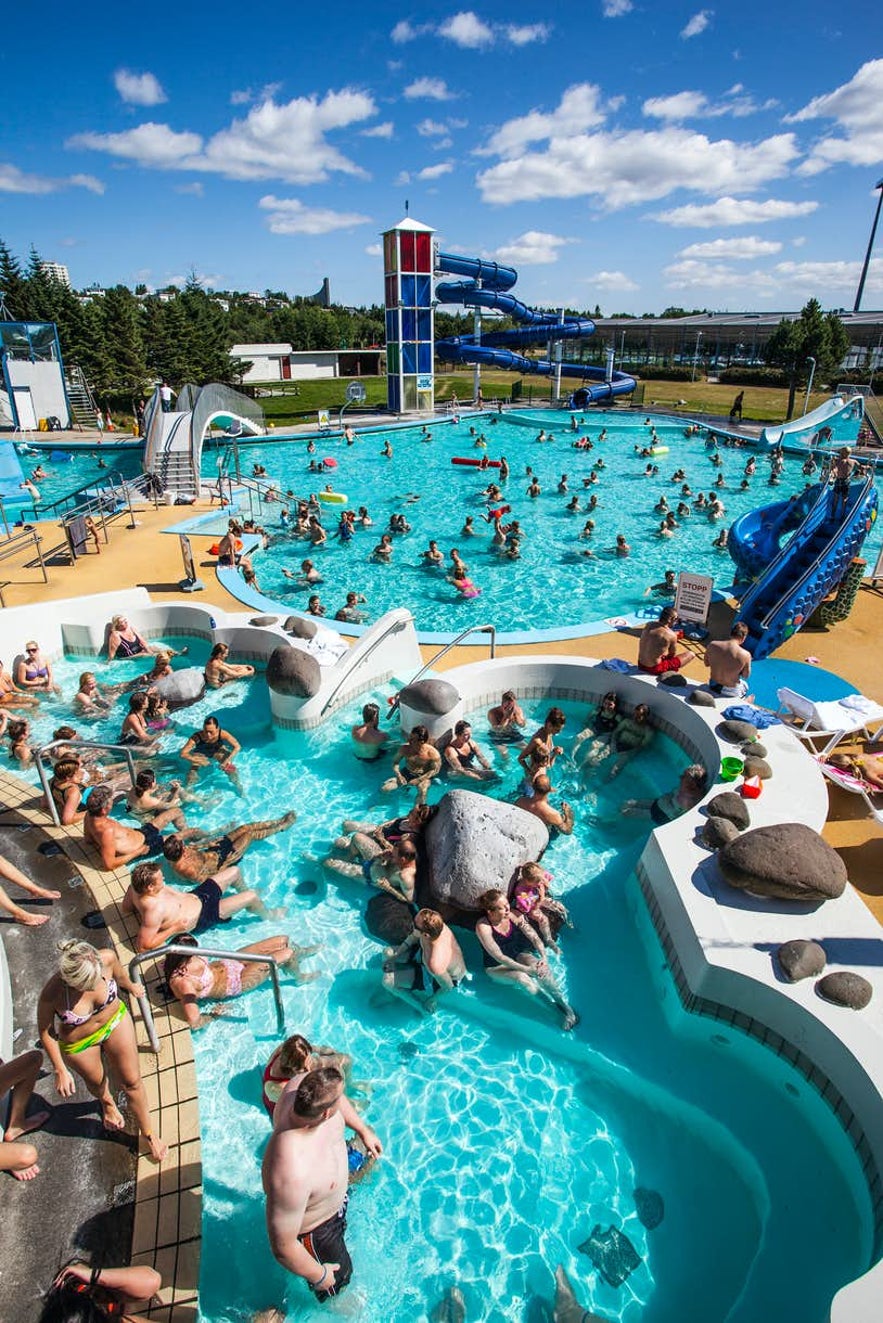 Photo from Reykjavik City Card | 72 Hours
Photo from Reykjavik City Card | 72 Hours
We should also mention the swimming pool at Vesturbæjarlaug has consistently voted as “Iceland’s Best Pool” by locals since its grand opening in 1961. Though not as flashy as Laugardalslaug, visitors to Vesturbæjarlaug go mainly for the hot pools, the centrepiece of the complex. The neighbourhood, Vesturbæjarlaug is known to be a social ground for politicians, artists and academics.
- See Also: The Best Swimming Pools in Iceland.
But, to reiterate, Iceland has many, many pools. For those travelling outside of Reykjavík, be it to the North, South or East, you’ll be sure to find a swimming pool quickly should the compulsion to soak take over. Of particular note is Seljavallalaug, a 25 m protected, outdoor pool found in South Iceland.
Having been built in 1925, Seljavallalaug is one of the oldest pools in Iceland and, by far, one of the most beautiful; surrounded by luscious green hills and built by the river, guests can soak themselves for hours free of charge. Be warned, however, the pool is only cleaned once every summer.
The Secret Lagoon, the actual oldest pool in the country, can be found nearby.
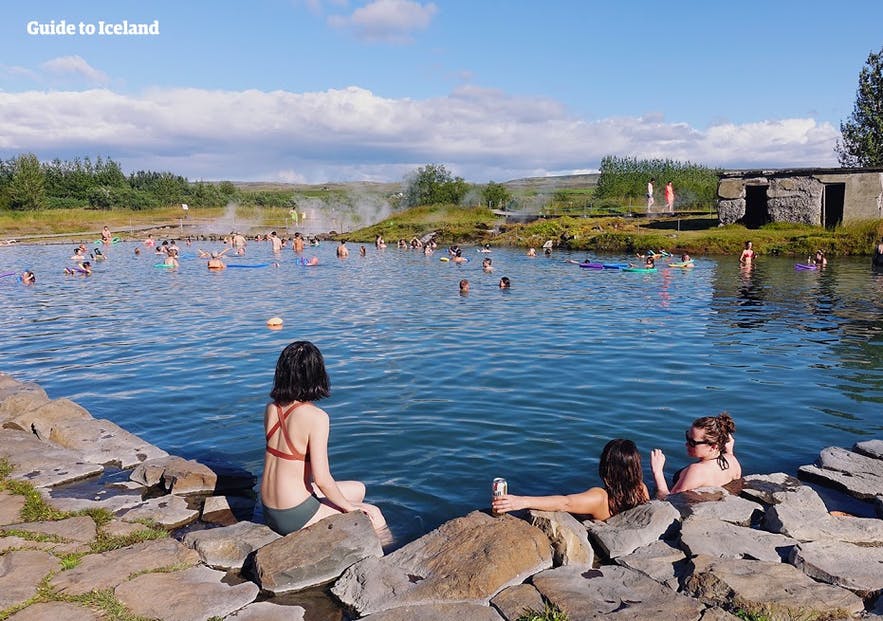
1. Iceland Exists on Energy from Water
In many countries, wasting water is a sure fire way of acting morally inefficient and generally irritating members of the household who too would like to take a shower in the morning.
Thankfully, Iceland doesn't have that problem, given the sheer amount of energy pulsating beneath the country's surface. Here, electricity, water, power, heat... all are in high supply and surprisingly cheap to maintain.
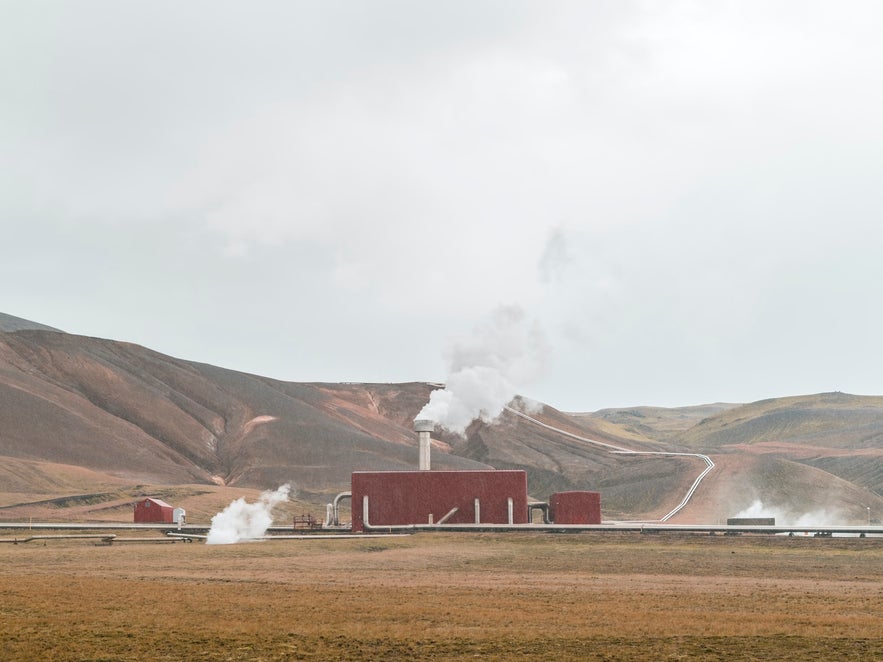 Photo from Wikimedia, Creative Commons, by Ásgeir Eggertsson. No edits made.
Photo from Wikimedia, Creative Commons, by Ásgeir Eggertsson. No edits made.
Geothermal energy in Iceland is masterfully utilised; with such an abundance of natural energy literally pouring out from the open ground, concepts such as "short showers" and "turn the lights off" have less gravitas here than elsewhere on the planet. Aside from geothermal thermal heating, the majority of Iceland's energy is achieved through hydroelectric power (up to 75%).
Over 80% of Reykjavik's domestic and industrial heating comes from volcanic activity near the city; in the winter months, even sidewalks are heated from beneath to help avoid pedestrian accidents. Water is transferred to the city from giant powerplants through several large pipes, clearly visible should one take a helicopter sightseeing tour.
Such an abundance of energy does have its drawbacks, however. One of Iceland's biggest and most controversial industries, aluminium smelting, only exists in Iceland because of how cheap it is to run the smelters themselves. Given how much electricity is necessary to smelt aluminium, Iceland seems the obvious choice; however, the toxins released from such activity causes irreparable damage to the environment and harm to those living close by.
Did you enjoy our article about Icelandic water? What were your favourite water-based activities whilst in Iceland? Please feel free to leave a comment or query in the Facebook box below.




